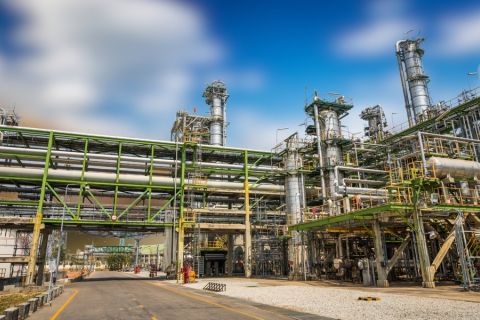Presented by:

Editor's note: This article appears in the new E&P newsletter. Subscribe to the newsletter here.
The basic understanding of how a gas separator operates can be somewhat of a mystery because of all the associated variables: two-phase flow, pressure variation both inside and outside the separator, vortex formation, velocity and viscosity of fluids, effect of the pump downstream, inherent erosion issues, single versus tandem designs, and others. In the past, engineers relied solely on instrumentation and educated assumptions for their separator designs.

Summit ESP invests in experienced personnel and new technology to unlock the mysteries of downhole mechanical gas separation. The Summit ESP team investigated improved methods of testing and, as a result, created a test system that visually displays internal individual flow regimes and component performance for better understanding. This testing system, along with a combination of high-speed photography, CFD validation and enhanced instrumentation, allows Summit ESP engineers to study every component of a mechanical separator system. The Hydro-Helical gas separator is a product of this testing effort, along with these sophisticated technologies.
The three main areas of focus were to increase the total fluid through the separator, reduce or eliminate erosion characteristics common in traditional gas separator designs, and maximize the efficiency of every internal and external component of the system.
The Hydro-Helical gas separator is the first new downhole, dynamic concept in 30 years. This novel design employs a new separation component that affects 100% of the fluid through the separator, while eliminating erosion and directing distinct fluid-phase streams into crossover flow paths. The advanced stage design creates the highest total flow range in the industry.
Higher performing elements
All gas separators ingest multiphase fluid into a separation chamber, separate gas and liquid phases, eject separated gas phase fluid into the well annulus, and provide sufficient liquid phase fluid to the pump. Existing designs vary, but they share the limitations including decreased efficiency at higher flow rates.
The new Hydro-Helical gas separator provides increased efficiency and flow rate through the separator:
- The intake minimizes flow losses and erosion from solids-laden fluid. Flow paths through the intake allow fluid moving stages to ingest large volumes with minimal deviations in flow direction.
- The fluid moving stages move solids-laden, multiphase fluid at high flow rates without suffering erosion and gas locking. Empirical data validated the advanced stages' immunity to gas locking at gas volume fractions up to 100%. The design allows increased flow rates and contains an anti-gas locking mechanism and thrust protection technology with abrasion-resistant bearings.
- The stationary hydro-helix vortex inducer uses the flow of fluid through its helical flow paths to create centrifugal separation. The flow paths allow high flow rates, and separation efficiency increases with increased flow rate. The entry and exit angles, expanding cross-section and pitch of the inducer help minimize erosion and significantly improve separation efficiency.
- The crossover vanes, influenced by the aerospace industry, with adjustable exit ports accept precisely directed fluid-phase streams from the vortex inducer and separation chamber. An improved bearing system provides increased torsional rigidity and support to the shaft, increasing reliability.
These components work in conjunction with the Hydro-Helical separation concept to harness the fluid’s kinetic energy and achieve high-efficiency separation, while operating at a high flow rate. Intelligent use of this energy drives separation and minimizes recirculation and ingestion of fluid through exit ports.
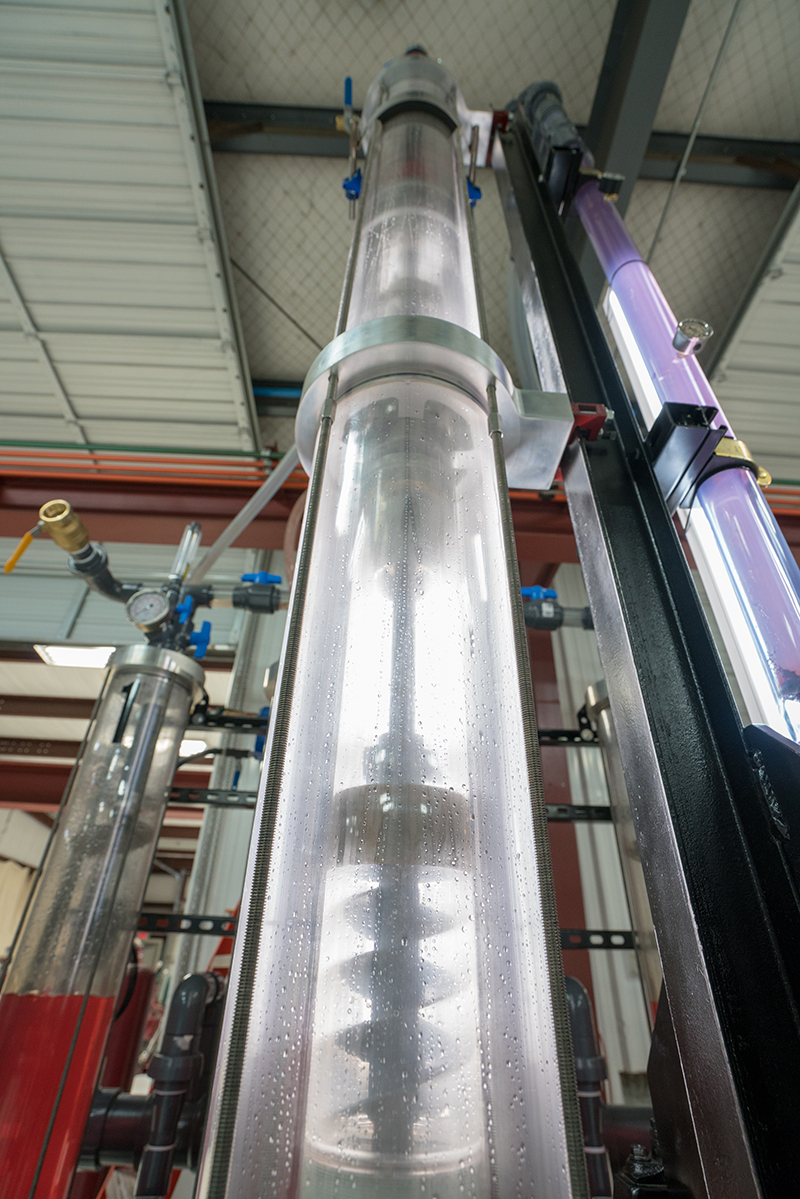
Impacts
Observations made during testing on a unique multiphase flow system prompted development of the Hydro-Helical gas separator. The test system consists of transparent canisters to examine flow conditions—internal and external to the gas separator and instrumentation—for collection of pressure and flow data at different points throughout the system. This provided a complete picture of conditions at any point.
Testing immediately highlighted deficiencies in conventional gas separator designs. Existing vortex inducing mechanisms cause regions of turbulent flow that promote remixing of fluid, resulting in complex and inefficient separation. Increasing flow across a conventional vortex separator increases the scale of turbulent mixing regions within the separation chamber.
Flow losses due to restrictions are excessive in some conventional designs, limiting maximum flow rate. This in turn limits pump compatibility with these separators, as efficiency decreases due to ingestion of fluid through exit ports to supply the pump’s fluid needs.
The Hydro-Helical gas separator overcomes these efficiency-draining and flow-rate-limiting phenomena. Minimization of flow losses and management of differential pressure allow higher flow rates, with effective separation at all flow rates.
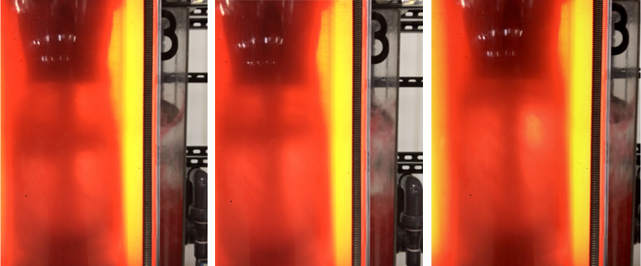
The Hydro-Helical gas separator can handle maximum flow rates at least 20% greater than, as advertised, conventional gas separators.
Gas separator comparison
|
|
|
|
|
|
|
|
|
|
|
|
|
|
|
|
|
|
|
|
|
|
|
|
|
|
|
|
|
|
|
|
|
|
|
|
|
|
|
|
|
|
|
|
|
|
|
|
|
|
|
|
|
|
|
|
|
|
|
|
|
|
|
The performance of a single Hydro-Helical gas separator exceeds even conventional tandem gas separators. Due to inherent design limitations in conventional tandem gas separators, which cause flow losses, recirculation and gas ingestion, their performance is inefficient compared to the new Hydro-Helical design. The tandem Hydro-Helical configuration further overcomes the limitations of conventional tandem separators and operates at 33% greater total flow capacity.
Field trial data
Initial field trial data show a marked improvement in drawdown capability. An electrical submersible pumping (ESP) system was pulled, and the only change was replacing a standard, high flow separator with the new Hydro-Helical gas separator; then the ESP string was reinstalled. Before the changeout, the system was experiencing performance degradation due to gas at 1,400 psi intake pressure. After the changeout, the reduced pump intake pressure indicated improvement in separator performance over a standard, high flow separator.
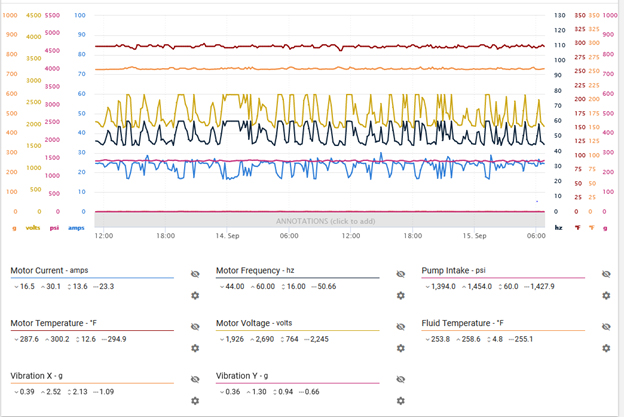
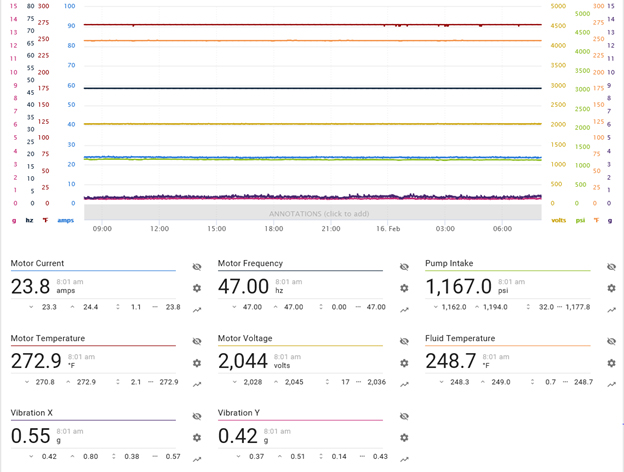
Operation of an ESP system with the Hydro-Helical gas separator under multiphase conditions is more effective when compared to current systems in existing wells. It operates with pumps of higher flow rate and in wells with higher gas volume fractions.
RELATED CONTENT:
Halliburton Introduces New Borehole Imaging Technology to Improve Formation Evaluation
Exec Q&A Video: Behind the Scenes at Halliburton Lab’s New Innovation Program
Recommended Reading
Talos Energy Sells CCS Business to TotalEnergies
2024-03-18 - TotalEnergies’ acquisition targets Talos Energy’s Bayou Bend project, and the French company plans to sell off the remainder of Talos’ carbon capture and sequestration portfolio in Texas and Louisiana.
SLB to Buy Service Firm ChampionX in $7.7B All-stock Deal
2024-04-02 - SLB will acquire ChampionX for $7.74 billion in an all-stock deal that puts a 14.6% premium on ChampionX’s April 1 closing price.
CERAWeek: Exxon Mobil CEO Says Not Trying to Acquire Hess
2024-03-18 - CEO Darren Woods said Exxon Mobil is trying to secure preemption rights over Hess Corp.'s Guyana assets in its dispute with Chevron, not buy the company itself.
ConocoPhillips CEO Ryan Lance: Upstream M&A Wave ‘Not Done’ Yet
2024-03-19 - Dealmaking in the upstream oil and gas industry totaled $234 billion in 2023. The trend shows no signs of slowing, ConocoPhillips CEO Ryan Lance said at the CERAWeek by S&P Global conference.
Renewables’ Share of Deal Flow Up, But M&A Slowing
2024-02-13 - Abundant capital remains available for renewable energy projects, and developers are looking for investors to help get projects over the finish line, expert says.

